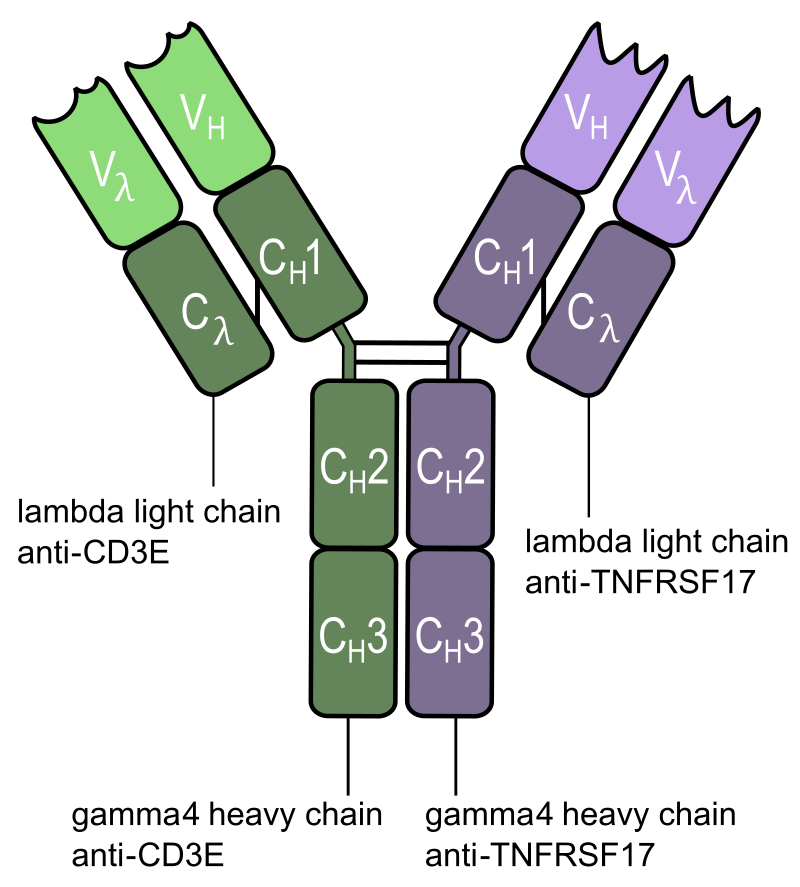Comparative Efficacy of Anti-BCMA and Anti-GPRC5D BiTEs in Myeloma

A recent real-world analysis presented at the 2025 American Society of Clinical Oncology (ASCO) Annual Meeting reveals that bispecific T-cell engagers (BiTEs) targeting the B-cell maturation antigen (BCMA) and the G-protein coupled receptor class 5 member D (GPRC5D) demonstrate comparable efficacy and safety profiles in patients with relapsed or refractory multiple myeloma who have not previously received CAR T-cell therapy. The study focused on three specific agents: teclistamab (Tecvayli), elranatamab (Elrexfio), and talquetamab (Talvey).
According to Dr. Ali Khan, a fellow in the Department of Medical Oncology at West Virginia University and lead author of the study, the analysis included a cohort of 532 patients, with 266 receiving anti-BCMA agents and the remaining 266 treated with anti-GPRC5D agents. The two-year overall survival rate was recorded at 55% for patients treated with anti-BCMA agents compared to 51% for those on the anti-GPRC5D regimen (P = 0.76). Additionally, complete remission rates were observed at 37% for the anti-BCMA group and 35% for the anti-GPRC5D group (P = 0.59).
Despite the comparable outcomes, the study highlighted significant differences in the safety profiles of the treatments. Notably, 35% of patients receiving anti-BCMA agents experienced cytokine release syndrome (CRS), while the incidence was markedly higher at 48% among those treated with talquetamab (P = 0.002). Infection rates were similar across both groups, standing at 46% for anti-BCMA agents and 44% for anti-GPRC5D agents (P = 0.66).
The research utilized the TriNetX electronic health record database to achieve a propensity score matching methodology, ensuring a balanced demographic across both treatment groups. The mean ages of patients were 67.2 years for the anti-BCMA agents and 67.4 years for the anti-GPRC5D agents (P = 0.82). This meticulous matching process was crucial, as the study sought to fill the existing gap in direct comparative data between these two classes of therapies.
Looking forward, the authors suggest several avenues for future research, including the sequencing of treatments to optimize patient outcomes and the exploration of combination therapies involving BiTEs alongside immunomodulatory drugs or immune checkpoint inhibitors. They also emphasized the necessity for further investigations into biomarker identification that may correlate with patient responses and highlighted the importance of equity in clinical outcomes across various demographics.
The FDA has granted approvals to teclistamab in February 2022, talquetamab in August 2023, and elranatamab shortly thereafter for the treatment of relapsed or refractory multiple myeloma, marking a significant advancement in therapeutic options for this challenging patient population.
This analysis not only contributes to the understanding of treatment efficacy in multiple myeloma but also lays the groundwork for future studies aimed at refining treatment protocols and improving patient care. The ongoing evolution of bispecific therapies represents a promising frontier in the management of hematologic malignancies, with the potential to enhance survival rates and quality of life for patients with limited treatment options.
Advertisement
Tags
Advertisement





